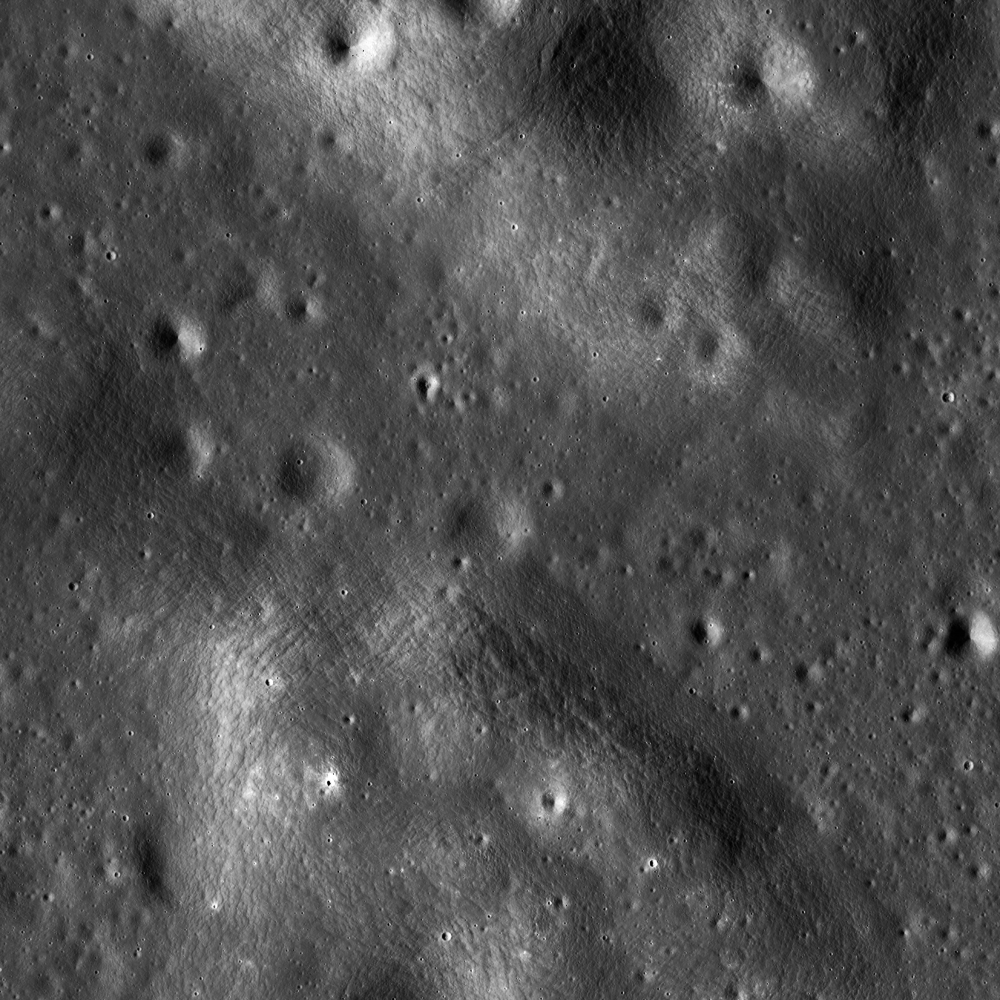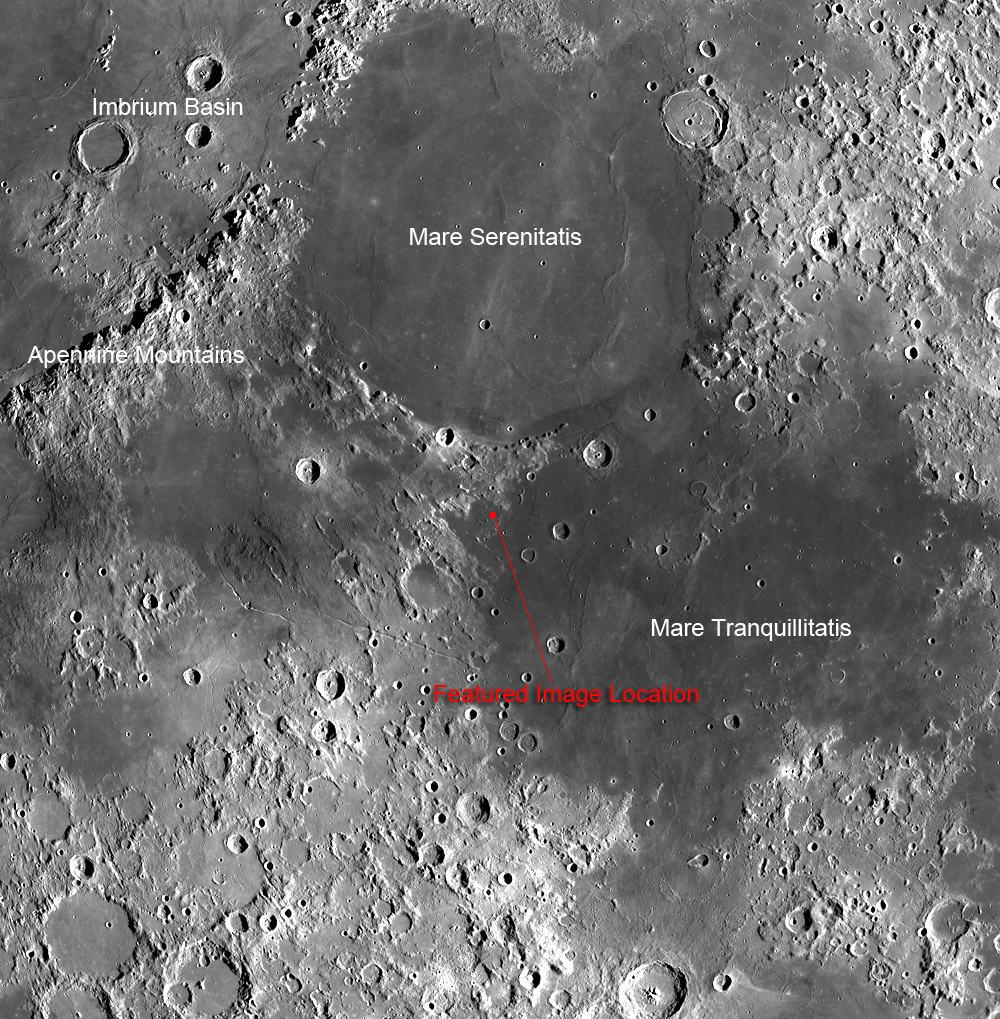
Most of the physical sciences are instructive in the art of piecing together observations made at vastly different scales. Note, for example, how climatologists look at pollen in soil samples to assess climate change through time on a global scale. Geologists use microscopes to examine mm-scale crystals in order to understand magma chambers many cubic miles in volume. Astronomers attempt to make sense of subatomic particles in the context of the entire visible Universe. With this in mind, try to explain the sculpted mountains in today's Featured Image, located at the northwestern margin of Mare Tranquillitatis.
You may find that adjusting the scale is necessary. Indeed; we will have to zoom out until we can see a good deal of the lunar nearside before the features have the context they need to be understood. Click on the image below to enlarge it for the answer.
These mountains are members of a group of mare-surrounded highland structures nestled between Mare Tranquillitatis and Mare Serenitatis. Examination of the region will quickly reveal a strong northwest to southeast trending orientation to most of the upland features that points directly back to the Apennine Mountains, which form the southeastern rim of the Imbrium basin. Now we can see that this whole region was sculpted by ground-hugging forces unleashed in the terrible cataclysm that formed that basin. Imagine witnessing this awesome event from the Earth over 3 billion years ago; it would have been clearly visible to the unaided eye!
Isolated mountains like these, which rise from a surrounding plain, are often referred to by geologists as monadnocks or inselbergs. On Earth such features might be erosional remnants, but here in the Bay of Honor (Sinus Honoris) we know them to be isolated by surrounding mare deposits. Click below to see the full NAC frame. Additional examples of large-scale features on the Moon can be explored with Four of a Kind in Catena Davy, Nearside Spectacular!, and A Scar in the Highlands.
Published by James Ashley on 25 April 2013
